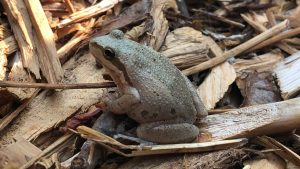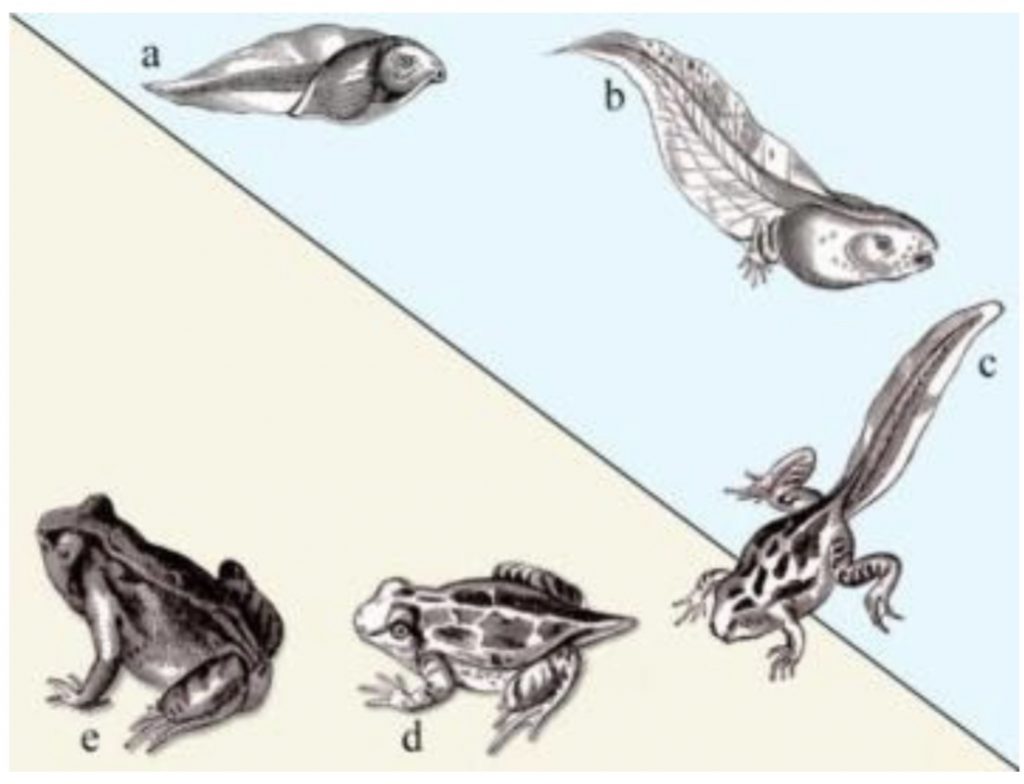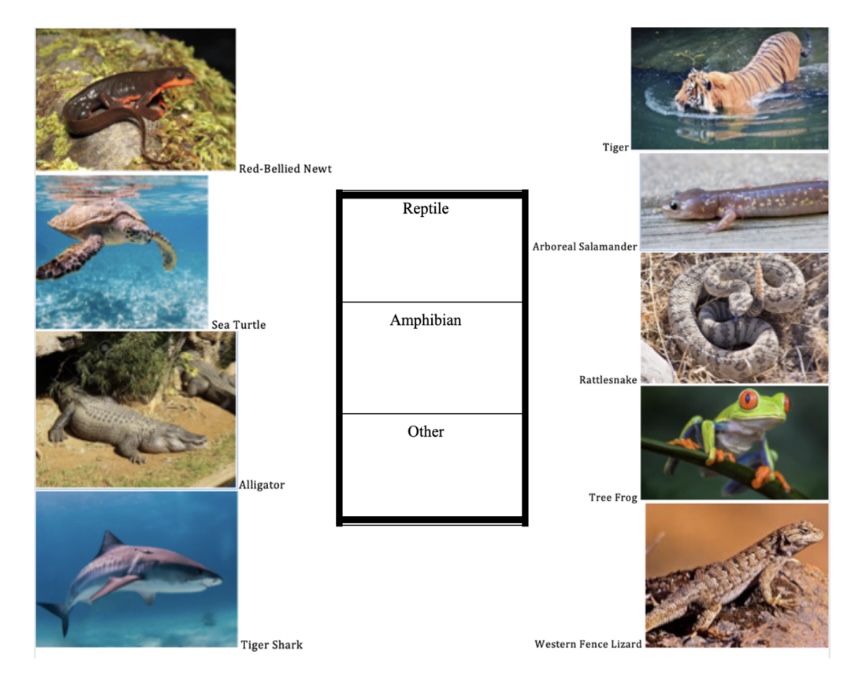
Summary:
In this video, Nicole discussed one of her favorite topics, herpetology! Herpetology is the study of Reptiles and Amphibians. Herpeton is Latin for “things that crawl”. Reptiles and Amphibians are Ectothermic (Ecto = outside and thermic = heat) and they rely on outside sources, like the sun, to control their body temperature.
Know-It-All
- What does a herpetologist study?
- How do reptiles and amphibians control their body heat?
- What are some differences between reptiles and amphibians?
- What is the difference between endothermic and ectothermic? Give an example of an endothermic animal and an ectothermic animal.
- Amphibian is Latin for “two stages” or ”two lives”. Explain an amphibian’s two-stage life cycle.
Digging Deeper
Frogs lay eggs in the water. When the frogs hatch, they are in the tadpole stage with a tail and gills (picture a). As the frog develops, it grows two legs (b). In the next stage of growth, the frog has four legs and a long tail (c). In picture d, the froglet is almost full grown but still has a short tail. Finally, as we see in e, the frog is fully grown.

Enjoy this video!
Why Is This Lizard Doing Push-Ups?
Try It
A) Draw your favorite reptile or amphibian in their habitat. Remember, if they are an amphibian they spend some time in the water and some time on land.
B) Write a story about a day in the life of a lizard. Give it a name. Send it on an adventure! Where does it hide from danger? What does it eat? Where does it get water? Does it have friends? Write at least six sentences from the point of view of your lizard.
C) Become a Herpetologist! Use the information you learned in the video plus your own research to make a list of 5 similarities and 5 differences between amphibians and reptiles.

D) Try this game! Sort these animals into categories. Are they amphibians, reptiles or neither? Draw a line from the animal to the category in which it belongs.

Print out the guide by downloading the PDF
#337 Reptiles and Amphibians Student Guide
